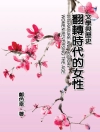Examining context-specific conditions in which girls live, learn, work, play, and organize deepens the understanding of place-making practices of girls and young women worldwide. Focusing on place across health, literary and historical studies, art history, communications, media studies, sociology, and education allows for investigations of how girlhood is positioned in relation to interdisciplinary and transnational research methodologies, media environments, geographic locations, history, and social spaces. This book offers a comprehensive reading on how girlhood scholars construct and deploy research frameworks that directly engage girls in the research process.
Jadual kandungan
List of Illustrations
Acknowledgements
Introduction: The Significance of Place in Girlhood Studies
Carrie Rentschler and Claudia Mitchell
SECTION I: GIRLS IN LATITUTDE AND LONGITUDE
Chapter 1. Under the Shadow of Empire: Indigenous Girls’ Presencing as Decolonizing Force
Sandrina de Finney
Chapter 2. Voices in Longitude and Latitude: Girlhood at the Intersection of Art and Ethnography
Marnina Gonick
Chapter 3. Nowhere to Go, Nothing to Do: Place, Desire, and Country Girlhood
Catherine Driscoll
Chapter 4. Landscapes of Academic Success: Smart Girls and School Culture
Rebecca Raby and Shauna Pomerantz
SECTION II: SITUATED KNOWLEDGE, SELF-REFLEXIVE PRACTICE
Chapter 5. Charting Girlhood Studies
Claudia Mitchell
Chapter 6. Teen Feminist Killjoys? Mapping Girls’ Affective Encounters with Femininity, Sexuality, and Feminism at School
Jessica Ringrose and Emma Renold
Chapter 7. Placing the Girlhood Scholar into the Politics of Change: A Reflexive Account
Caroline Caron
Chapter 8. Returns and Departures Through Girlhood: Memory-work as an Approach to the Politics of Place in Mother-Daughter Narratives
Teresa Strong-Wilson
Chapter 9. Girls Action Network: Reflecting on Systems Change through the Politics of Place
Tatiana Fraser, Nisha Sajnani, Alyssa Louw, and Stephanie Austin
SECTION III: GIRLS AND MEDIA SPACES
Chapter 10. “What This Picture of a Girl Means to Me”: The Place of Girlhood Images in the Art History University Classroom
Loren Lerner
Chapter 11. Modding as Making: Religious Flap Books Created by Eighteenth- and Nineteenth-Century Anglo-American Girls
Jacqueline Reid-Walsh
Chapter 12. Where are the Irish Girls? Girlhood, Irishness, and L.T. Meade
Susan Cahill
Chapter 13. “God is a DJ”: Girls, Music, Performance, and Negotiating Space
Geraldine Bloustien
Chapter 14. Creating and Regulating Identity in Online Spaces: Girlhood, Social Networking, and Avatars
Connie Morrison
SECTION IV: STUDYING THE SPACES OF GIRLS’ ACTIVISM
Chapter 15. Making Activism Accessible: Exploring Girls’ Blogs as Sites of Contemporary Feminist Activism
Jessalynn Keller
Chapter 16. “Ain’t no Justice… It’s Just Us”: Girls Organizing Against Sexual and Carceral Violence
Lena Palacios
Chapter 17. From the Playing Field to the Policy Table: Stakeholders’ Responses to Rwandan Schoolgirls’ Photographs on Physical Activity and Sport in Secondary Schools
Lysanne Rivard
Chapter 18. Girls, Condoms, Tradition, and Abstinence: Making Sense of HIV Prevention Discourses in Rural South Africa
Katie Mac Entee
Epilogue
Notes on Contributors
Bibliography
Index
Mengenai Pengarang
Carrie Rentschler is Associate Professor and William Dawson Scholar of Feminist Media Studies in the Department of Art History and Communication Studies, and Associate Member and former Director of the Institute for Gender, Sexuality, and Feminist Studies at Mc Gill University. She is the author of Second Wounds: Victims’ Rights and the Media in the U.S. (Duke University Press, 2011).












